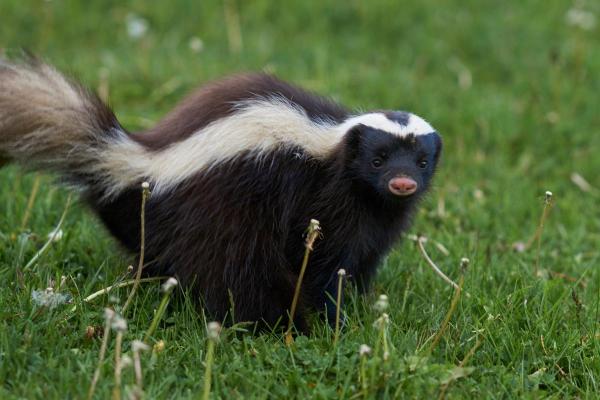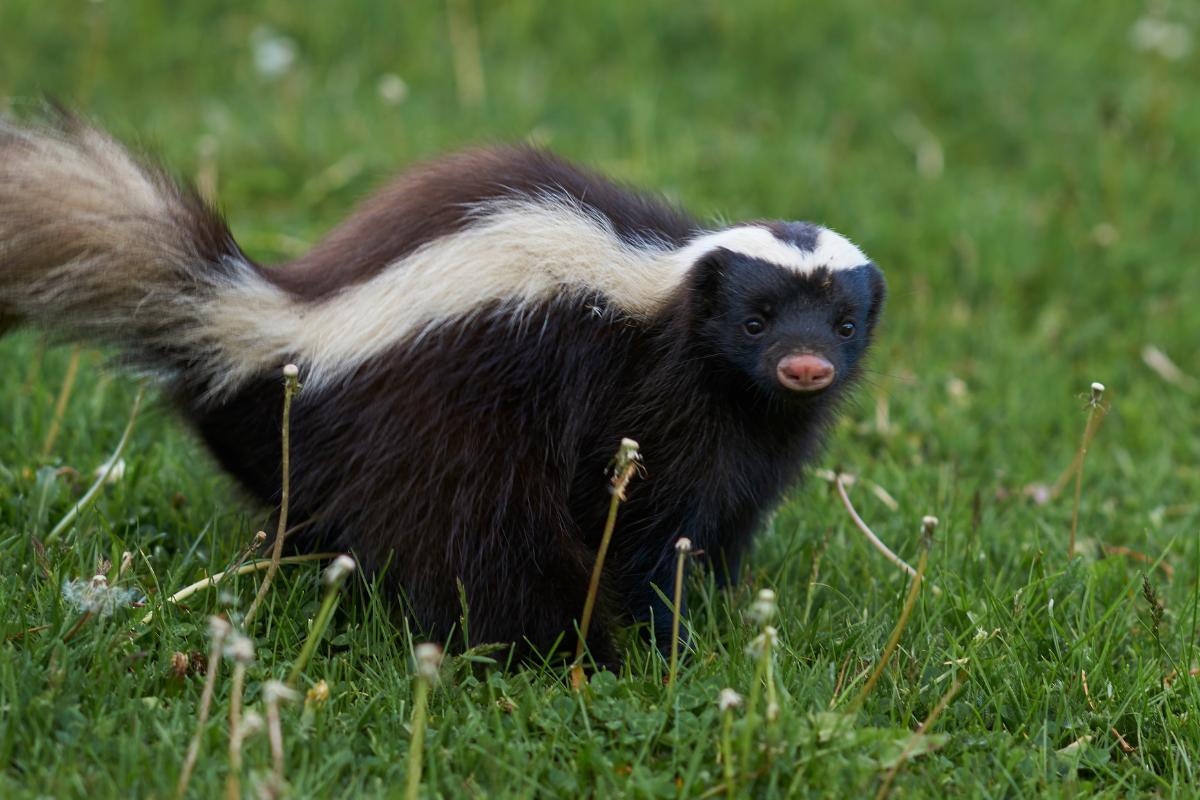Are There Skunks in Spain?


Skunks were once considered types of mustelid from the family Mustelidae, the taxonomic family that includes otters, weasels, badgers and similar mammals. This is due to similarities in their physical appearance and behavior. There are various mustelids that live in Spain, including badgers, otters, pine martens and mink. Although thought to be a type of mustelid, skunks are now considered part of the Mephitidae family, a different taxonomic group. Perhaps most closely resembling a badger, the skunk is a different type of mammal and not known to live in Spain.
At AnimalWised, we find out more by asking are there skunks in Spain? We look at the presence of skunks in Europe in general, the different species of skunk and the reason why there are no skunks in Spain.
Are there wild skunks in Spain?
Ten extant species of skunks have been identified, all of of which ten are native to America. As we have already said, there have been some taxonomic changes over the years, but they currently make up the family Mephitidae. These include two other species which are known as stink badgers. While they are not technically types of skunks, they are similar and are sometimes grouped together with them.
The following are the twelve types of skunks and stink badgers, as well as their distribution in the wild:
- Molina's hog-nosed skunk (Conepatus chinga): Argentina, Bolivia, Brazil, Chile, Paraguay, Peru and Uruguay.
- Humboldt's hog-nosed skunk (Conepatus humboldtii): Argentina and Chile.
- American hog-nosed skunk (Conepatus leuconotus): El Salvador, Guatemala, Honduras, Mexico, Nicaragua, and the United States.
- Hog-nosed striped skunk (Conepatus semistriatus): Belize, Brazil, Colombia, Costa Rica, Ecuador, Honduras, Mexico, Nicaragua, Panama, Peru, and Venezuela.
- Southern spotted skunk (Spilogale angustifrons): Belize, Costa Rica, El Salvador, Guatemala, Honduras, Mexico, and Nicaragua.
- Striped skunk (Mephitis mephitis): Canada, Mexico and the United States.
- Pygmy spotted skunk (Spilogale pygmaea): Mexico.
- Western spotted skunk (Spilogale gracilis): Mexico and the United States.
- Hooded skunk (Mephitis macroura): El Salvador, Guatemala, Honduras, Mexico, Nicaragua and the United States.
- Eastern spotted skunk (Spilogale putorius): Canada, Mexico, and the United States.
- Palawan stink badger (Mydaus marchei): Philippines .
- Sunda stink badger (Mydaus javanensis): Indonesia and Malaysia.
As we can see, none of the different types of skunk are native to Spain. All skunks are endemic to the Americas, with stink badgers being endemic to Asia. They are not present in native populations on any other continent. This includes all of the rest of Europe, meaning there are no wild populations of skunks in Europe.

Are there non-native skunks in Spain?
As we have mentioned, there are no skunks that are endemic to Spain or anywhere in Europe. Just because an animal species is not native to a country, doesn't mean there are not species which have been introduced. This is often due to human interference, sometimes being imported for the pet trade.
The International Union for Conservation of Nature (IUCN) is an institution with global impact on the evaluation of biodiversity. They evaluate the status of species and part of this evaluation is the monitoring of the illegal trafficking of animals, whether as pets or to be used in other industries such as traditional medicine. The IUCN does not report any serious causes of trafficking to Spain.
In cases that have been reported by the IUCN of illegal pet trading, the Palawan stink badger (Mydaus marchei) is reported to have been subject to limited trafficking. This is often to be sold to private collectors, but usually remaining within Asia.
Although the Palawan stink badger is considered of ‘Least Concern’ in terms of conservation, this does not mean that the pet trade should be supported. It can be incredibly detrimental to individual species and their larger ecosystems.
Native to Argentina and Chile, the Humboldt's hog-nosed skunk (Conepatus humboldtii) was widely exported during the years 1960 to 1980. There are not many reported in Europe, but it does appear that a species of striped hog-nosed skunk (Conepatus semistriatus) was present in the Barcelona Zoo around the year 2000. However, we cannot find many currently present in zoos across Spain.
There are no known non-native skunk populations in Europe. There may be some present in zoos and wildlife parks. If there are any found in the wild, they are likely to be escaped or abandoned animals from the illegal pet trade, but no known sightings have been reported.
Should we introduce skunks to Europe?
Throughout their history of social development, human beings have become accustomed to introducing animals to non-native regions. This has been done for varying purposes, but mainly for animal use or exploitation. Some introduction of animals have been seen as more beneficial, such as when used as pets or biological controllers to help an ecosystem.
Unfortunately, the introduction of species can have serious consequences for the local fauna of a region or country. Introduced species that share ecological niches with local ones become competitors. In many cases, they displace native species, even pushing them to the brink of extinction. This undoubtedly generates destabilization in ecosystems.
There have also been cases where animals such as dogs and cats that were released or have access to wild spaces, become predators of other local animals. They can also infect them with diseases for which they are not immunologically prepared, resulting in terrible ecological consequences.
Many countries have strict controls for animal introduction. There are also international laws for the trade and transfer of animals from one region to another. If animal transportation is not carried out in a controlled manner, the consequences can be catastrophic.
Based on the above, we should now see the reasons why there should not be skunks in Spain or Europe. These animals are omnivores, but their diet usually consists mainly of other animals such as birds, reptiles and insects. Introducing them can decimate these prey animals and threaten native species which rely on them for survival.
Skunks also have a powerful defensive weapon in the form of the production of a very irritating substance that they can spray at threats. It can be toxic, causing nausea, severe irritation and even temporary blindness. In this sense, skunks have few effective predators, so their control can become complicated if they are improperly introduced into a country like Spain.
While there are no native members of Mephitidae in Europe, there are mammals that resemble them. Learn more with our article on the animals that look like skunks.
If you want to read similar articles to Are There Skunks in Spain?, we recommend you visit our Facts about the animal kingdom category.
- IUCN. (2024). The IUCN Red List of Threatened Species. Version 2023-1 https://www.iucnredlist.org/search?taxonomies=101537&searchType=species
- Wund, M. (2005). Mephitidae. Animal Diversity Web
https://animaldiversity.org/accounts/Mephitidae/






